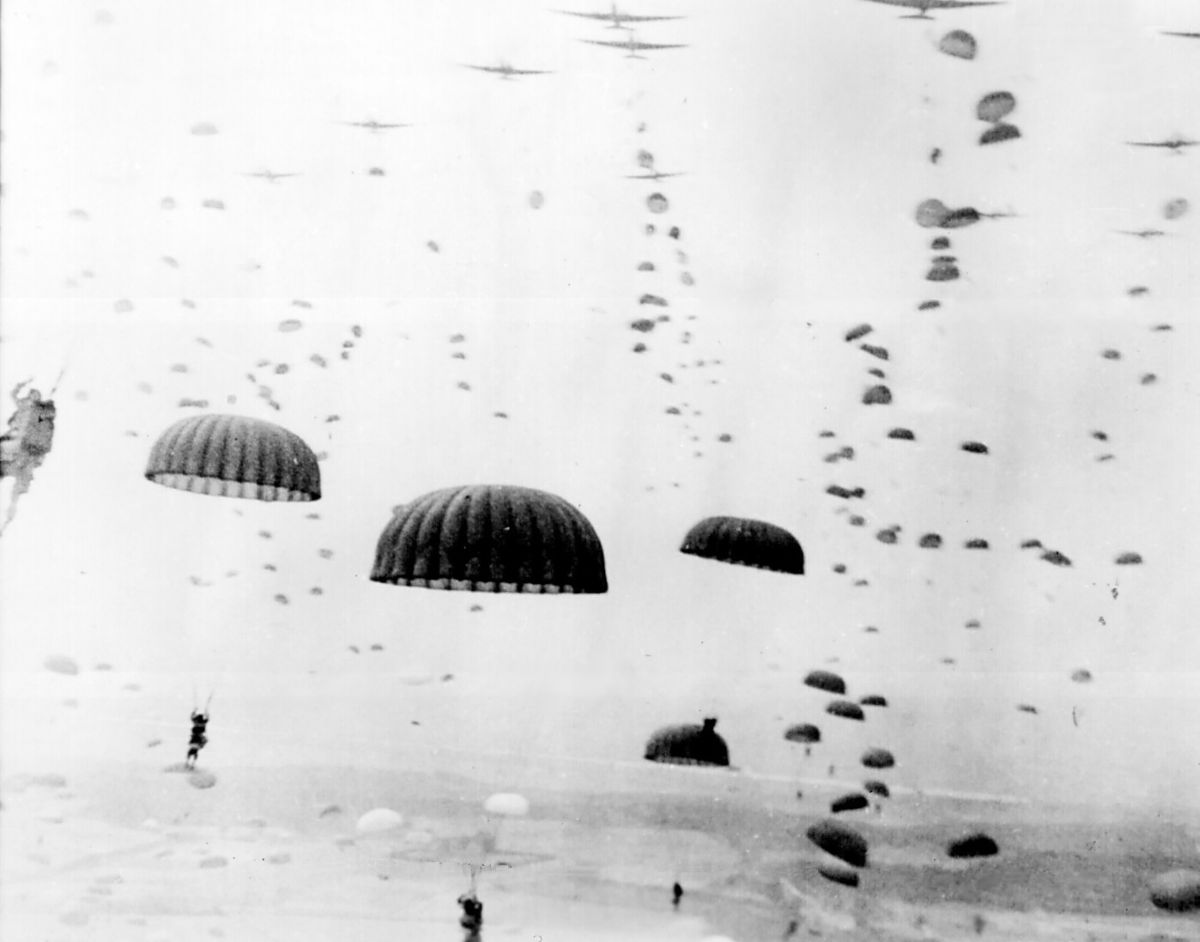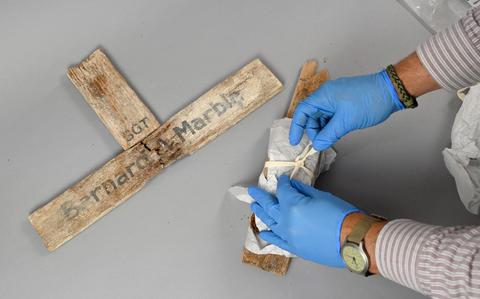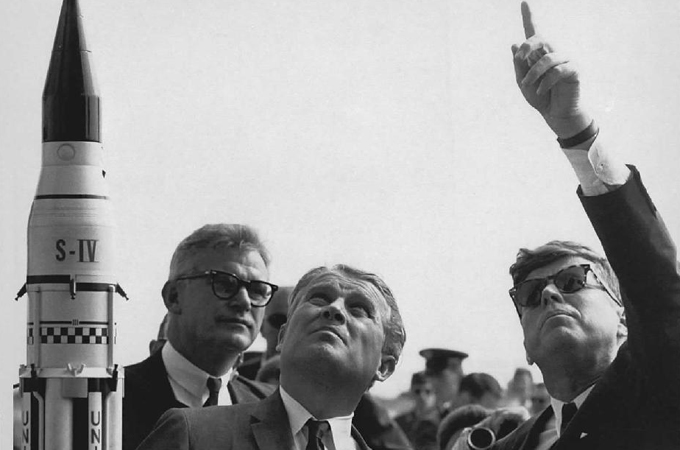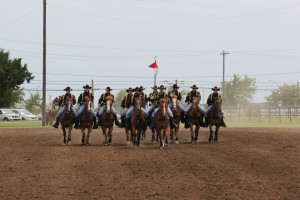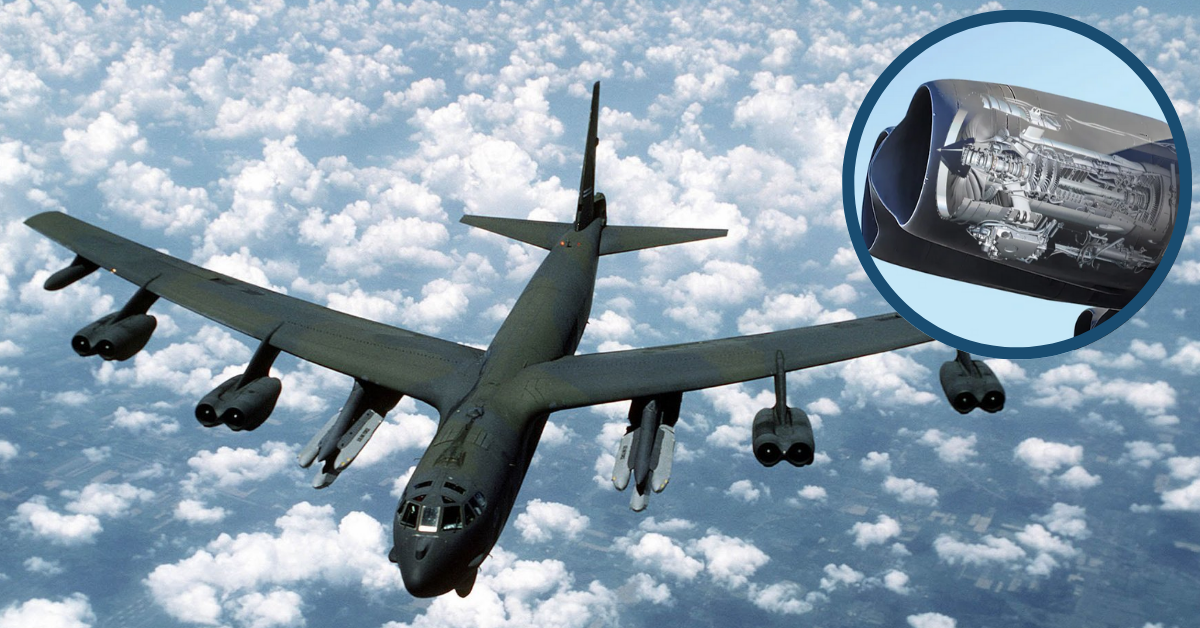BarnBuster
Virtually Unknown Member
Today in Military History:

Beginning early on the morning of September 17 in 1862, Confederate and Union troops in the Civil War clash near Maryland's Antietam Creek in the bloodiest one-day battle in American history. The Battle of Antietam marked the culmination of Confederate General Robert E. Lee's first invasion of the Northern states. Guiding his Army of Northern Virginia across the Potomac River in early September 1862, the great general daringly divided his men, sending half of them under the command of General Thomas "Stonewall" Jackson to capture the Union garrison at Harper's Ferry.
President Abraham Lincoln put Major General George B. McClellan in charge of the Union troops responsible for defending Washington, D.C., against Lee's invasion. McClellan's Army of the Potomac clashed first with Lee's men on 14 September, with the Confederates forced to retreat after being blocked at the passes of South Mountain. Though Lee considered turning back toward Virginia, news of Jackson's capture of Harper's Ferry reached him on 15 September.
That victory convinced him to stay and make a stand near Sharpsburg, Maryland. Over the course of 15 and 16 September, the Confederate and Union armies gathered on opposite sides of Antietam Creek. On the Confederate side, Jackson commanded the left flank with General James Longstreet at the head of the centre and right. McClellan's strategy was to attack the enemy left, then the right, and finally, when either of those movements met with success, to move forward down the centre.
When fighting began in the foggy dawn hours of 17 September, this strategy broke down into a series of uncoordinated advances by Union soldiers under the command of Generals Joseph Hooker, Joseph Mansfield and Edwin Sumner.
Cannon fire opened the battle with puffs of white smoke rising from the tree line. As 500 artillery pieces firing over 50,000 rounds of ammunition thundered and raked their shot and shell across the rolling terrain and into the battle lines downing men of both sides, sounds of musketry too would crackle as disciplined soldiers stood in rank and file formations only to vanish as though a large and ominous sickle had just swept them from the field. The numerous ridges made excellent locations for cannon. The infantry of both sides made easy targets as they marched across low-lying, open fields nearby
Posted on the ridgelines, the cannoneers devastated the soldiers in the swales below them. The landscape and the heavy reliance on artillery by both sides made Antietam one of the most significant artillery battles in the Civil War. Cannonading during the battle had never been seen afore on the continent.
As savage and bloody combat continued for eight hours across the region, the Confederates were pushed back but not beaten, despite sustaining some 15,000 casualties. At the same time, Union General Ambrose Burnside opened an attack on the Confederate right, capturing the bridge that now bears his name around 1 p.m.
In a square of ground, centered on the cornfield, measuring about 1,000 yards on a side, nearly 12,000 men from both sides lay dead or wounded. The slaughter had taken four hours at most before it came to a sullen, exhausted halt. In all directions lay hundreds of dead horses, some of which had been partly burned, but the task of thus destroying them was evidently too great for the force detailed for that purpose and they had been left to the elements and the buzzards. Every house, barn and church was turned into a hospital. Dead men and horses lay unburied for days in the brutal September heat. Flies and maggots covered the living and dead in undulating masses, adding to the unsanitary conditions. The stench was unimaginable.
As night fell, thousands of bodies littered the sprawling Antietam battlefield and both sides regrouped and claimed their dead and wounded. Just twelve hours of intense and often close-range fighting with muskets and cannons had resulted in around 23,000 casualties, including an estimated 3,650 dead.
Civil War soldiers had a 7 to 1 chance of surviving a battle wound. Two-thirds of all the 364,000 soldiers in the Union army died of disease. Only one-third died from actual wounds sustained during the war. About 80 percent of the wounds soldiers received during the Civil War were in the soldier’s arms, hands, legs and feet. Amputations had an approximately twenty-seven percent fatality rate.
Burnside's break to reorganise his men allowed Confederate reinforcements to arrive, turning back the Union advance there as well. By the time the sun went down, both armies still held their ground, despite staggering combined casualties. McClellan's centre never moved forward, leaving a large number of Union troops that did not participate in the battle.
On the morning of 18 September, both sides gathered their wounded and buried their dead. That night, Lee turned his forces back to Virginia. The battle also gave President Abraham Lincoln the opportunity to issue the preliminary Emancipation Proclamation, which, on January 1, 1863, declared all slaves in the Confederate states free.
Twenty Union soldiers received Medals Of Honor for their gallantry on the Battle of Antietam. Eight of the twenty men were awarded the Medal for either capturing or saving flags.
During the American Civil War, as in earlier conflicts, the flags of a combat unit (its "colors") held a special significance. They had a spiritual value; they embodied the very "soul" of the unit. Protecting a unit's flag from capture was paramount; losing one to the enemy was considered disgraceful . There were practical reasons for the flags as well, as the regimental flags marked the position of the unit during battle. The smoke and confusion of battle often scattered participants across the field. The flag served as a visual rallying point for soldiers and also marked the area where to attack the enemy. Carrying the colors for the regiment was the greatest honor for a soldier. Generally the flag bearers were selected or elected to their position by the men and officers of the unit. As one Union Colonel told his men, “the colors bear the same relation to the soldier as honesty and integrity do to manhood. It is the guiding star to victory. When in the smoke and din of battle the voice of the officer is drown by the roar of artillery, the true soldier turns his eye to the colors that he may not stray too far from it, and while it floats is conscious of his right and strength. Take it… guard it as you would the honor of the mother, wife or friend you left behind.”
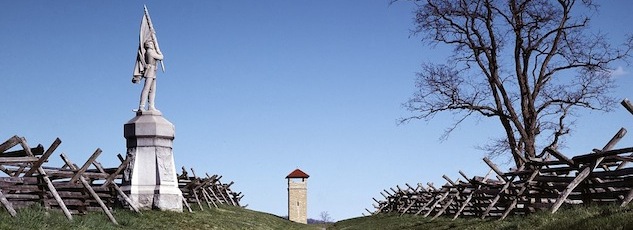
 www.historynet.com
www.historynet.com
Beginning early on the morning of September 17 in 1862, Confederate and Union troops in the Civil War clash near Maryland's Antietam Creek in the bloodiest one-day battle in American history. The Battle of Antietam marked the culmination of Confederate General Robert E. Lee's first invasion of the Northern states. Guiding his Army of Northern Virginia across the Potomac River in early September 1862, the great general daringly divided his men, sending half of them under the command of General Thomas "Stonewall" Jackson to capture the Union garrison at Harper's Ferry.
President Abraham Lincoln put Major General George B. McClellan in charge of the Union troops responsible for defending Washington, D.C., against Lee's invasion. McClellan's Army of the Potomac clashed first with Lee's men on 14 September, with the Confederates forced to retreat after being blocked at the passes of South Mountain. Though Lee considered turning back toward Virginia, news of Jackson's capture of Harper's Ferry reached him on 15 September.
That victory convinced him to stay and make a stand near Sharpsburg, Maryland. Over the course of 15 and 16 September, the Confederate and Union armies gathered on opposite sides of Antietam Creek. On the Confederate side, Jackson commanded the left flank with General James Longstreet at the head of the centre and right. McClellan's strategy was to attack the enemy left, then the right, and finally, when either of those movements met with success, to move forward down the centre.
When fighting began in the foggy dawn hours of 17 September, this strategy broke down into a series of uncoordinated advances by Union soldiers under the command of Generals Joseph Hooker, Joseph Mansfield and Edwin Sumner.
Cannon fire opened the battle with puffs of white smoke rising from the tree line. As 500 artillery pieces firing over 50,000 rounds of ammunition thundered and raked their shot and shell across the rolling terrain and into the battle lines downing men of both sides, sounds of musketry too would crackle as disciplined soldiers stood in rank and file formations only to vanish as though a large and ominous sickle had just swept them from the field. The numerous ridges made excellent locations for cannon. The infantry of both sides made easy targets as they marched across low-lying, open fields nearby
[The single-shot, muzzle-loading musket dictated that infantry fight in closely formed, standing lines of battle to achieve effective concentration of fire. In spite of the revolution caused by the adoption of the rifle-musket, which increased the effective range of a regiment from seventy-five yards to well over 250 yards, the battles of 1861 and early 1862 were largely fought with the smoothbore muskets of earlier periods, and officers were trained to handle their men accordingly. Volley fire (necessitated by the inherent inaccuracy of the smoothbore musket) demanded strict attention to proper alignment of all segments of a military unit, lest a portion of the unit's fire fall harmlessly short. The combination of new rifles that could be shot with great accuracy from far away and old-fashioned battle lines led to unprecedented deaths in the Battle of Antietam (and in the Civil War in general). As in other Civil War battles, both sides in Antietam arranged their infantry shoulder-to-shoulder in two long parallel lines before marching into battle. This type of linear formation made sense in earlier years, when military weaponry consisted mostly of smoothbore muskets (which were accurate only at short range) and bayonets (which, likewise, could only be used at close range). But by the beginning of the Civil War, rifling—the use of helical grooves in the barrel of a weapon, which stabilize a bullet, leading to greater shooting accuracy—was widespread. Now soldiers could make an aimed shot from 100 yards away and shoot into an enemy line with hope of hitting someone from 400 yards away. Armed with rifled muskets, a defensive line could do serious damage when attackers attempted to charge.]
Posted on the ridgelines, the cannoneers devastated the soldiers in the swales below them. The landscape and the heavy reliance on artillery by both sides made Antietam one of the most significant artillery battles in the Civil War. Cannonading during the battle had never been seen afore on the continent.
As savage and bloody combat continued for eight hours across the region, the Confederates were pushed back but not beaten, despite sustaining some 15,000 casualties. At the same time, Union General Ambrose Burnside opened an attack on the Confederate right, capturing the bridge that now bears his name around 1 p.m.
In a square of ground, centered on the cornfield, measuring about 1,000 yards on a side, nearly 12,000 men from both sides lay dead or wounded. The slaughter had taken four hours at most before it came to a sullen, exhausted halt. In all directions lay hundreds of dead horses, some of which had been partly burned, but the task of thus destroying them was evidently too great for the force detailed for that purpose and they had been left to the elements and the buzzards. Every house, barn and church was turned into a hospital. Dead men and horses lay unburied for days in the brutal September heat. Flies and maggots covered the living and dead in undulating masses, adding to the unsanitary conditions. The stench was unimaginable.
As night fell, thousands of bodies littered the sprawling Antietam battlefield and both sides regrouped and claimed their dead and wounded. Just twelve hours of intense and often close-range fighting with muskets and cannons had resulted in around 23,000 casualties, including an estimated 3,650 dead.
Civil War soldiers had a 7 to 1 chance of surviving a battle wound. Two-thirds of all the 364,000 soldiers in the Union army died of disease. Only one-third died from actual wounds sustained during the war. About 80 percent of the wounds soldiers received during the Civil War were in the soldier’s arms, hands, legs and feet. Amputations had an approximately twenty-seven percent fatality rate.
Burnside's break to reorganise his men allowed Confederate reinforcements to arrive, turning back the Union advance there as well. By the time the sun went down, both armies still held their ground, despite staggering combined casualties. McClellan's centre never moved forward, leaving a large number of Union troops that did not participate in the battle.
On the morning of 18 September, both sides gathered their wounded and buried their dead. That night, Lee turned his forces back to Virginia. The battle also gave President Abraham Lincoln the opportunity to issue the preliminary Emancipation Proclamation, which, on January 1, 1863, declared all slaves in the Confederate states free.
Twenty Union soldiers received Medals Of Honor for their gallantry on the Battle of Antietam. Eight of the twenty men were awarded the Medal for either capturing or saving flags.
(The criteria for issuance of the MOH during the Civil War were different than later years and Congress set down guidelines in 1918 to clear away any inconsistencies of the legislation which had grown around the Medal and to finalize rules for its award. 911 MOH’s were invalidated of the 2,625 that were issued during the US Civil War. Many of the Medal’s issuance’s were for picking up the fallen colors (Flag) and advancing. None of these Medals were invalidated as the Flag was an important and reverent rallying symbol for open field charging troops. Sharpshooters on both sides targeted Standard Bearers before officers. see below, bb)
During the American Civil War, as in earlier conflicts, the flags of a combat unit (its "colors") held a special significance. They had a spiritual value; they embodied the very "soul" of the unit. Protecting a unit's flag from capture was paramount; losing one to the enemy was considered disgraceful . There were practical reasons for the flags as well, as the regimental flags marked the position of the unit during battle. The smoke and confusion of battle often scattered participants across the field. The flag served as a visual rallying point for soldiers and also marked the area where to attack the enemy. Carrying the colors for the regiment was the greatest honor for a soldier. Generally the flag bearers were selected or elected to their position by the men and officers of the unit. As one Union Colonel told his men, “the colors bear the same relation to the soldier as honesty and integrity do to manhood. It is the guiding star to victory. When in the smoke and din of battle the voice of the officer is drown by the roar of artillery, the true soldier turns his eye to the colors that he may not stray too far from it, and while it floats is conscious of his right and strength. Take it… guard it as you would the honor of the mother, wife or friend you left behind.”

Battle Of Antietam
Facts About The Battle Of Antietam (a.k.a. Battle Of Sharpsburg) during the American Civil War Battle Of Antietam Summary: The Battle of Antietam, a.k.a.
Battle of Antietam Civil War Antietam Battle Casualties Army
Battle of Antietam Sharpsburg Maryland, Antietam Killed Wounded Deaths Casualties Battle of Antietam Fatalities Casualty Order Battlefield American Civil War Timeline Map Union Confederate Army Cannon
thomaslegioncherokee.tripod.com
Last edited:



